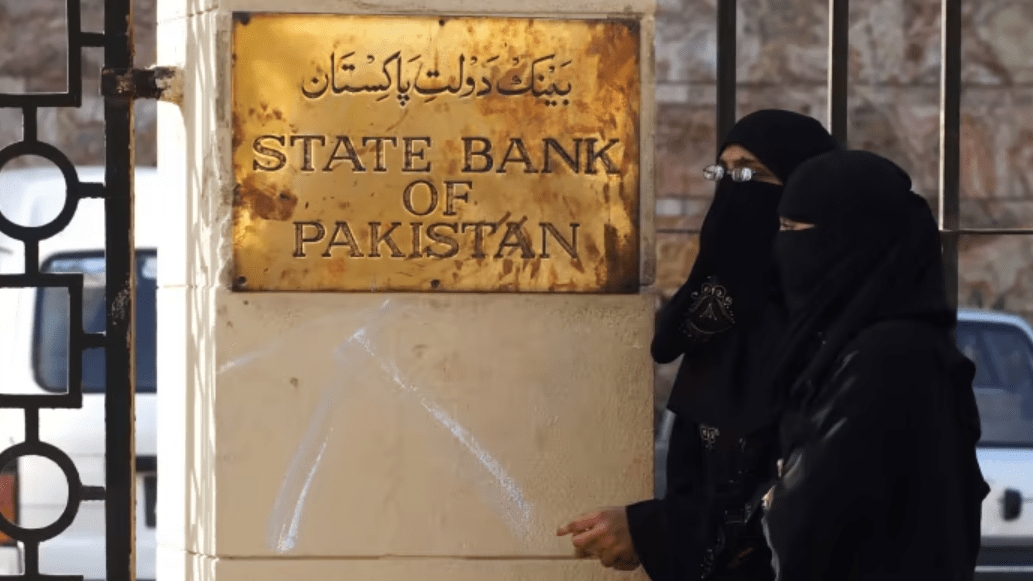
Please make use of the sharing options available through the share icon located at the top or side of stories. Copying stories to distribute to others is against FT.com’s terms of service and copyright policy. To purchase more rights, send an email to [email protected] Clauses and Controversies program is hosted by Mark Weidemaier and Mitu Gulati, who are professors at the University of North Carolina and University of Virginia Law Schools and frequently offer a combined course on national debt.
We began investigating the conditions of Pakistan’s sukuk bond, which expires in 2029, after receiving an email from a credit expert a few months ago. Islamic banking is not our area of expertise, but the bond was selling at a modest premium over Pakistani eurobonds. The Pakistani sukuk is basically a sovereign credit even though it wasn’t formally granted by the government. We thought that the price discrepancy was caused by a transient liquidity differential.
The financial problem in Pakistan has gotten worse over time. Prices indicate hopes for a rebound in the event of default, as is the case when there is a close default. Although there has never been a sovereign sukuk restructuring, as the data below demonstrates, the market appears to believe that the sukuk will receive a greater payment than the eurobonds.
Why? Agregated collective action provisions are present in the majority of foreign assets released after 2014, including Pakistan’s. These provisions permit the restructuration of the sukuk and the eurobonds under basically identical economic conditions. Instruments that anticipate the same transaction should move similarly. However, they don’t. Is there anything about Pakistan’s 2029 sukuk that prevents it from being combined with the country’s numerous outstanding eurobonds?
Although they have been around for at least 20 years, sovereign sukuk are still a tiny part of the realm of sovereign debt. We haven’t come across any written articles that address how a reorganization might combine sukuk and eurobonds. However, it would appear that the bonds’ conditions permit this.
The 2029 sukuk and the 2031 eurobond will be our main topics.
Both the sukuk and the eurobond’s law provisions—the sukuk omits the term “debt”—allow the securities to be reorganized in a combined manner with other “Debt Securities Capable of Aggregation.” This is how the word is defined:
Securities that can be aggregated for voting purposes with other series of securities are considered [debt] Securities Capable of Aggregation. These securities include or incorporate by reference this Condition 15 and Condition 16, as well as provisions that are substantially similar to these terms.
Both the sukuk and the eurobond have the same clauses 15 and 16. The fact that the sukuk only relate to “securities” rather than “debt securities” also makes no difference. (since the payment of interest is not allowed for the sukuk). In both instances, the word refers to sukuk and eurobonds issued by Pakistan, whether directly or tangentially. The pertinent wording from the eurobond is as follows:
When the term “debt securities” is used, it refers to any notes (including the Notes), bonds, debentures, or other debt securities (which, for these purposes, shall be deemed to include any sukuk or other trust certificates representing the Issuer’s credit), issued directly or indirectly by the Issuer in one or more series with an original stated maturity of more than a year.
The clause in the sukuk serves the same purpose practically. It omits “debt” and replaces “issuer” with “Trustee or Government,” but the message is still clear. Although sukuk and eurobonds vary greatly in many ways, they appear to have similar consolidation rules. Additionally, if combined through the joint action provision, the sukuk and eurobond must be given the same consideration. The expensive jigsaw we started with is all that is left.
We can think of at least three reasons why the prices are different. The reasons are different but linked, and several may be at work.
The ability to combine the sukuk and the eurobonds does not guarantee that it will happen. The bearers of the sukuk could more successfully hold out if they were more coordinated and organized. Given that, Pakistan may decide to exclude them from the reorganization and compensate them in full. Naturally, the market would also need to be aware of this situation and have knowledge of the investors in the sukuk.
financiers in sukuk might be powerful local groups or financiers with affinities. If that were the case, Pakistan might want to make them a unique offer. However, given the present controversy over equitable treatment in state restructurings, that will be debatable. It is difficult to imagine the IMF, China, the Paris Club, or creditors consenting to give sukuk unique treatment, despite the particular position they may hold in the hearts of the Pakistani government.
The sukuk market may be longer than other markets to integrate pricing information. Sukuk pricing may take longer to adjust for default information if sukuk investors typically purchase and retain – perhaps most are Middle Eastern sovereign wealth funds – and rarely sell to troubled debt buyers. That would be particularly true if price changes on the eurobond market are the result of dealing by troubled debt funds.
Whatever the reason, the expanding sukuk market ensures that these problems will continue to crop up in state restructurings. And it seems unlikely that sukuk will routinely get superior care in the long run. However, if Pakistan does need to reorganize, which is looking more and more probable, we will get a sneak peek. Someone will experience an unpleasant discovery.






